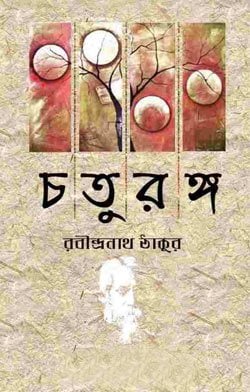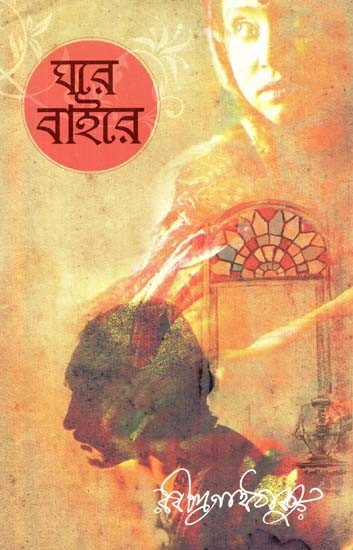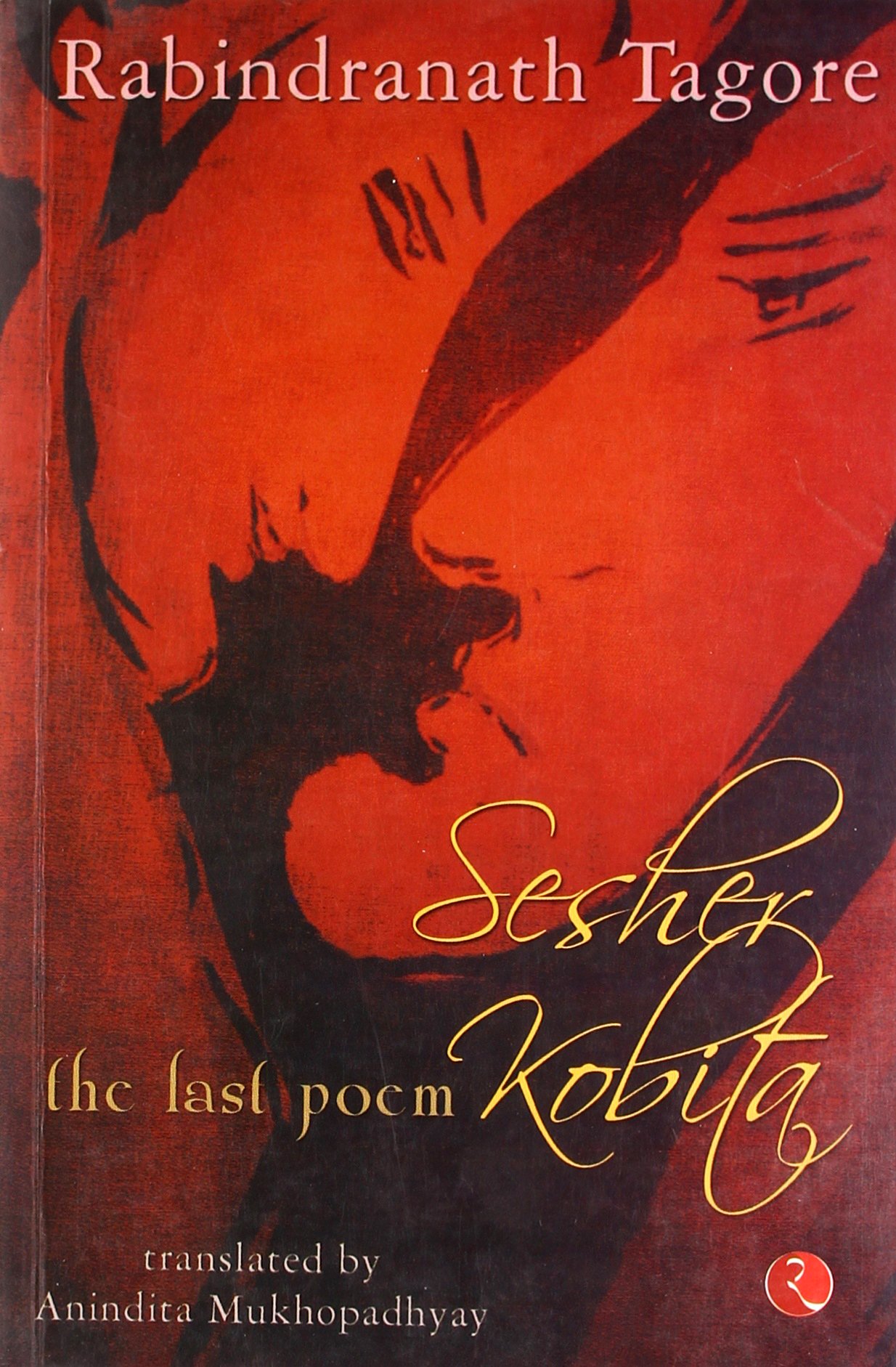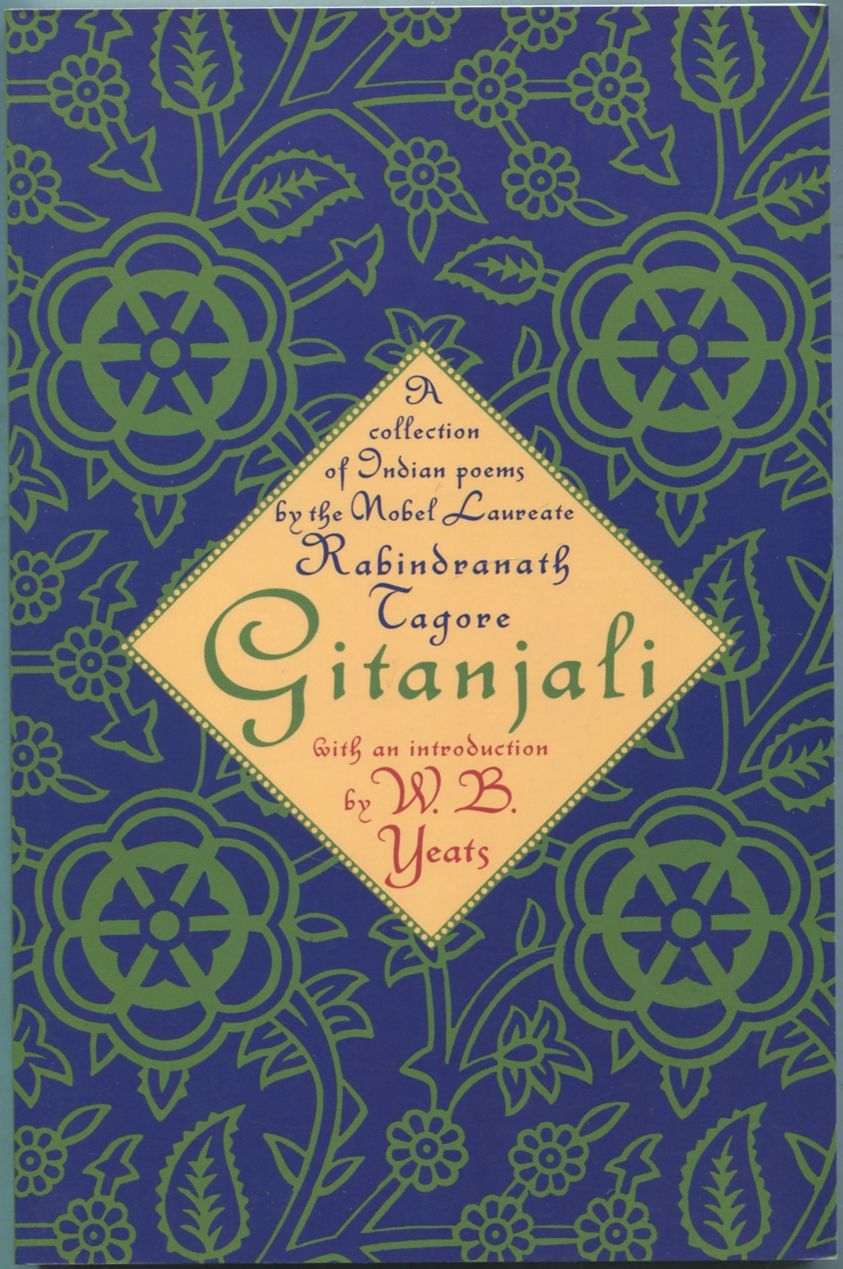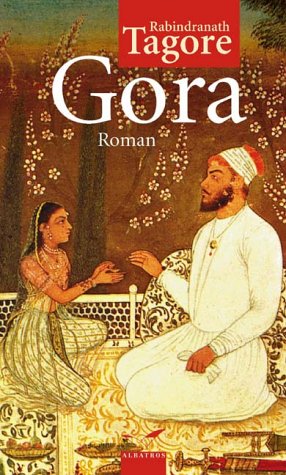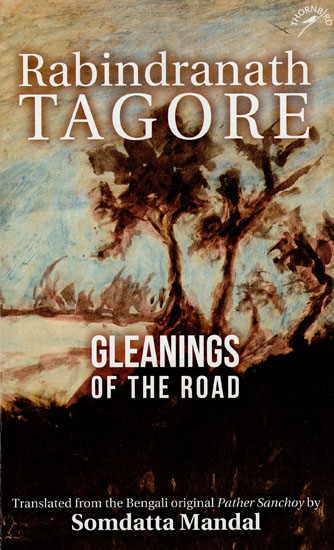Overview :
Rabindranath Tagore was a Bengali polymath who worked as a poet, writer, playwright, composer, philosopher, social reformer and painter. He reshaped Bengali literature and music as well as Indian art with Contextual Modernism in the late 19th and early 20th centuries. Author of the "profoundly sensitive, fresh and beautiful" poetry of Gitanjali, he became in 1913 the first non-European and the first lyricist to win the Nobel Prize in Literature. Tagore's poetic songs were viewed as spiritual and mercurial; however, his "elegant prose and magical poetry" remain largely unknown outside Bengal. He was a fellow of the Royal Asiatic Society. Referred to as "the Bard of Bengal", Tagore was known by sobriquets: Gurudev, Kobiguru, Biswakobi.
Author Portfolio :
Known mostly for his poetry, Tagore wrote novels, essays, short stories, travelogues, dramas, and thousands of songs. Of Tagore's prose, his short stories are perhaps most highly regarded; he is indeed credited with originating the Bengali-language version of the genre. His works are frequently noted for their rhythmic, optimistic, and lyrical nature. Such stories mostly borrow from the lives of common people. Tagore's non-fiction grappled with history, linguistics, and spirituality. He wrote autobiographies. His travelogues, essays, and lectures were compiled into several volumes, including Europe Jatrir Patro (Letters from Europe) and Manusher Dhormo (The Religion of Man). His brief chat with Einstein, "Note on the Nature of Reality", is included as an appendix to the latter.
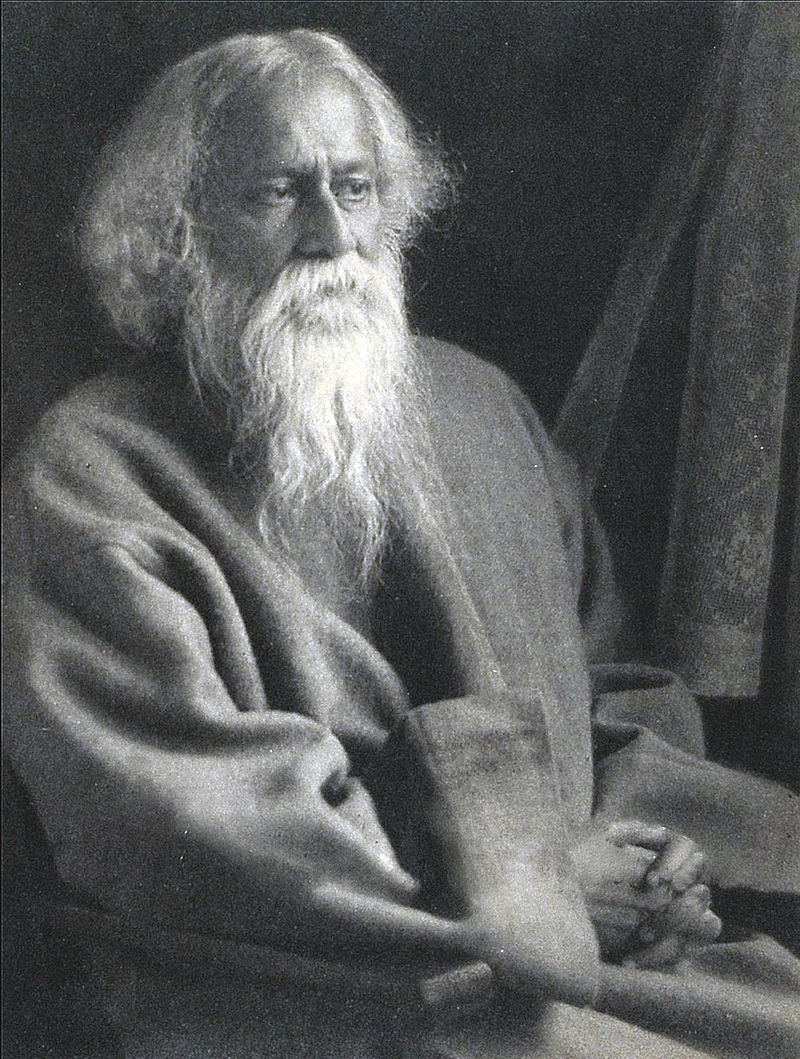
Tagore began his career in short stories in 1877—when he was only sixteen—with "Bhikharini" ("The Beggar Woman"). With this, Tagore effectively invented the Bengali-language short story genre. The four years from 1891 to 1895 are known as Tagore's "Sadhana" period (named for one of Tagore's magazines). This period was among Tagore's most fecund, yielding more than half the stories contained in the three-volume Galpaguchchha, which itself is a collection of eighty-four stories. Such stories usually showcase Tagore's reflections upon his surroundings, on modern and fashionable ideas, and on interesting mind puzzles (which Tagore was fond of testing his intellect with). Tagore typically associated his earliest stories (such as those of the "Sadhana" period) with an exuberance of vitality and spontaneity; these characteristics were intimately connected with Tagore's life in the common villages of, among others, Patisar, Shajadpur, and Shilaida while managing the Tagore family's vast landholdings. There, he beheld the lives of India's poor and common people; Tagore thereby took to examining their lives with a penetrative depth and feeling that was singular in Indian literature up to that point. In particular, such stories as "Kabuliwala" ("The Fruitseller from Kabul", published in 1892), "Kshudita Pashan" ("The Hungry Stones") (August 1895), and "Atithi" ("The Runaway", 1895) typified this analytic focus on the downtrodden. Many of the other Galpaguchchha stories were written in Tagore's Sabuj Patra period from 1914 to 1917, also named after one of the magazines that Tagore edited and heavily contributed to.
Tagore wrote eight novels and four novellas, among them Chaturanga, Shesher Kobita, Char Odhay, and Noukadubi. Ghare Baire (The Home and the World)—through the lens of the idealistic zamindar protagonist Nikhil—excoriates rising Indian nationalism, terrorism, and religious zeal in the Swadeshi movement; a frank expression of Tagore's conflicted sentiments, it emerged from a 1914 bout of depression. The novel ends in Hindu-Muslim violence and Nikhil's—likely mortal—wounding. Though his novels remain among the least-appreciated of his works, they have been given renewed attention via film adaptations by Ray and others: Chokher Bali and Ghare Baire are exemplary. In the first, Tagore inscribes Bengali society via its heroine: a rebellious widow who would live for herself alone. He pillories the custom of perpetual mourning on the part of widows, who were not allowed to remarry, who were consigned to seclusion and loneliness. Tagore wrote of it: "I have always regretted the ending".
Internationally, Gitanjali (Bengali: গীতাঞ্জলি) is Tagore's best-known collection of poetry, for which he was awarded the Nobel Prize in Literature in 1913. Tagore was the first non-European to receive a Nobel Prize in Literature and second non-European to receive a Nobel Prize after Theodore Roosevelt. Besides Gitanjali, other notable works include Manasi, Sonar Tori ("Golden Boat"), Balaka ("Wild Geese" — the title being a metaphor for migrating souls). Tagore's poetic style, which proceeds from a lineage established by 15th- and 16th-century Vaishnava poets, ranges from classical formalism to the comic, visionary, and ecstatic. He was influenced by the atavistic mysticism of Vyasa and other rishi-authors of the Upanishads, the Bhakti-Sufi mystic Kabir, and Ramprasad Sen. Tagore's most innovative and mature poetry embodies his exposure to Bengali rural folk music, which included mystic Baul ballads such as those of the bard Lalon. These, rediscovered and repopularised by Tagore, resemble 19th-century Kartābhajā hymns that emphasise inward divinity and rebellion against bourgeois bhadralok religious and social orthodoxy. During his Shelaidaha years, his poems took on a lyrical voice of the moner manush, the Bāuls' "man within the heart" and Tagore's "life force of his deep recesses", or meditating upon the jeevan devata—the demiurge or the "living God within". This figure connected with divinity through appeal to nature and the emotional interplay of human drama. Such tools saw use in his Bhānusiṃha poems chronicling the Radha-Krishna romance, which were repeatedly revised over the course of seventy years.
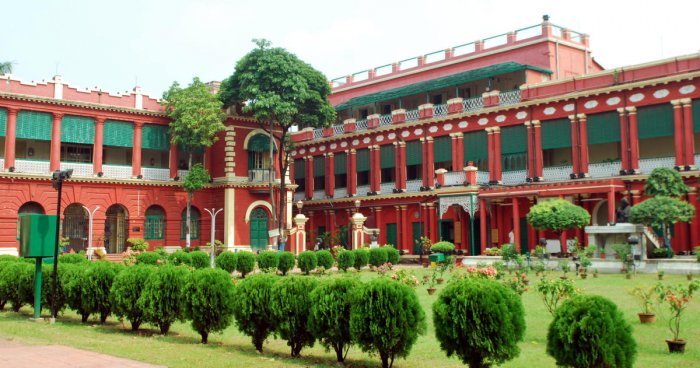
Tagore modernised Bengali art by spurning rigid classical forms and resisting linguistic strictures. His novels, stories, songs, dance-dramas, and essays spoke to topics political and personal. Gitanjali (Song Offerings), Gora (Fair-Faced) and Ghare-Baire (The Home and the World) are his best-known works, and his verse, short stories, and novels were acclaimed—or panned—for their lyricism, colloquialism, naturalism, and unnatural contemplation. His compositions were chosen by two nations as national anthems: India's "Jana Gana Mana" and Bangladesh's "Amar Shonar Bangla". The Sri Lankan national anthem was inspired by his work.
Life Styles :
Tagore was raised mostly by servants; his mother had died in his early childhood and his father travelled widely. The Tagore family was at the forefront of the Bengal renaissance. They hosted the publication of literary magazines; theatre and recitals of Bengali and Western classical music featured there regularly. Tagore's father invited several professional Dhrupad musicians to stay in the house and teach Indian classical music to the children. Tagore's oldest brother Dwijendranath was a philosopher and poet. Another brother, Satyendranath, was the first Indian appointed to the elite and formerly all-European Indian Civil Service. Yet another brother, Jyotirindranath, was a musician, composer, and playwright. His sister Swarnakumari became a novelist. Jyotirindranath's wife Kadambari Devi, slightly older than Tagore, was a dear friend and powerful influence. Her abrupt suicide in 1884, soon after he married, left him profoundly distraught for years.
Tagore largely avoided classroom schooling and preferred to roam the manor or nearby Bolpur and Panihati, which the family visited. His brother Hemendranath tutored and physically conditioned him—by having him swim the Ganges or trek through hills, by gymnastics, and by practising judo and wrestling. He learned drawing, anatomy, geography and history, literature, mathematics, Sanskrit, and English—his least favourite subject. Tagore loathed formal education—his scholarly travails at the local Presidency College spanned a single day. Years later he held that proper teaching does not explain things; proper teaching stokes curiosity.
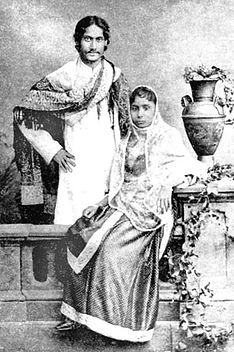
After his upanayan (coming-of-age rite) at age eleven, Tagore and his father left Calcutta in February 1873 to tour India for several months, visiting his father's Santiniketan estate and Amritsar before reaching the Himalayan hill station of Dalhousie. There Tagore read biographies, studied history, astronomy, modern science, and Sanskrit, and examined the classical poetry of Kālidāsa. During his 1-month stay at Amritsar in 1873 he was greatly influenced by melodious gurbani and nanak bani being sung at Golden Temple for which both father and son were regular visitors. He mentions about this in his My Reminiscences (1912):
The golden temple of Amritsar comes back to me like a dream. Many a morning have I accompanied my father to this Gurudarbar of the Sikhs in the middle of the lake. There the sacred chanting resounds continually. My father, seated amidst the throng of worshippers, would sometimes add his voice to the hymn of praise, and finding a stranger joining in their devotions they would wax enthusiastically cordial, and we would return loaded with the sanctified offerings of sugar crystals and other sweets.
Between 1878 and 1932, Tagore set foot in more than thirty countries on five continents. In 1912, he took a sheaf of his translated works to England, where they gained attention from missionary and Gandhi protégé Charles F. Andrews, Irish poet William Butler Yeats, Ezra Pound, Robert Bridges, Ernest Rhys, Thomas Sturge Moore, and others. Yeats wrote the preface to the English translation of Gitanjali; Andrews joined Tagore at Santiniketan. In November 1912 Tagore began touring the United States and the United Kingdom, staying in Butterton, Staffordshire with Andrews's clergymen friends. From May 1916 until April 1917, he lectured in Japan and the United States. He denounced nationalism. His essay "Nationalism in India" was scorned and praised; it was admired by Romain Rolland and other pacifists.
A Bengali Brahmin from Calcutta with ancestral gentry roots in Burdwan district and Jessore, Tagore wrote poetry as an eight-year-old. At the age of sixteen, he released his first substantial poems under the pseudonym Bhānusiṃha ("Sun Lion"), which were seized upon by literary authorities as long-lost classics. By 1877 he graduated to his first short stories and dramas, published under his real name. As a humanist, universalist, internationalist, and ardent anti-nationalist, he denounced the British Raj and advocated independence from Britain. As an exponent of the Bengal Renaissance, he advanced a vast canon that comprised paintings, sketches and doodles, hundreds of texts, and some two thousand songs; his legacy also endures in his founding of Visva-Bharati University.
Popular Works :
| Bengali Title | English Translation | Subject | Genre | Year |
|---|---|---|---|---|
| Gitanjali | Song-offerings | Devotion to God | Poem | 1910 |
| Chokher Bali | A Grain of Sand | Extra-marital affair | Novel | 1903 |
| Ghare Baire | The Home and the World | Life struggles | Autobiographical novel | 1916 |
| Nastanirh | The Broken Nest | Emancipation of women | Novel | 1901 |
| Sesher Kobita | The Last Poem | Love story | Novel | 1929 |
| Dui Bigha Jomi | Two Acres of Land | Struggles of the poor | Poem | 1877 |
| Kabuliwala | The Seller from Kabul | Human love and suffering | Short Story | 1892 |

